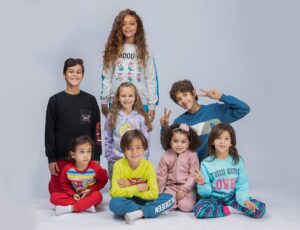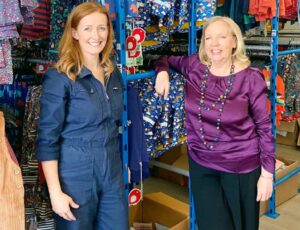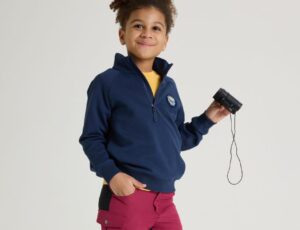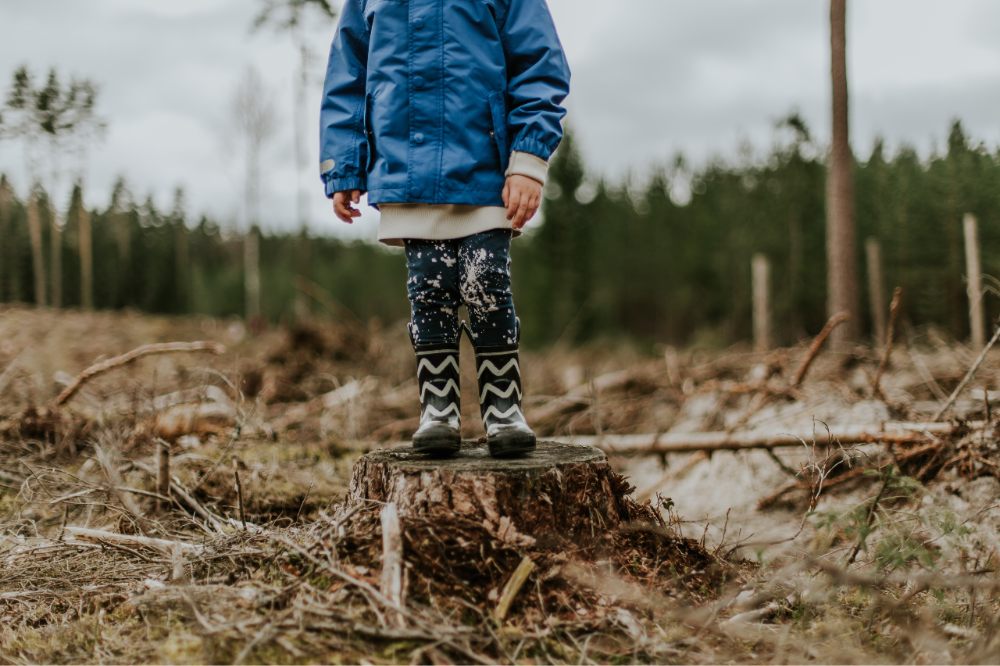
Camilla Mjelde and Sara Kwok from leading global sustainable supply chain and traceability expert, Trimco, discuss compliance and traceability solutions in the childrenswear supply chain.
The demand for a proven sustainable track record in the fashion industry has never been higher. With an increase in regulations on what constitutes “eco-friendly” and how brands can market their products as such in response to heightened consumer awareness, the need for effective methods of monitoring social and environmental compliance and demonstrating traceability in the supply chain is on the rise. This affects all areas of fashion, including childrenswear and schoolwear, where the opportunity for change is huge. Trimco Group, a leading global supplier of sustainable brand identity solutions in fashion and sportswear, offers its advice and vision for the future of traceability in children’s clothing.

The place of sustainability in childrenswear
At the initial point of purchase, parents are the decision-makers in the childrenswear buying process. According to a report led by insights provider, Parents and Brands, quality and wearability are more important than price when choosing their children’s clothes. This means a brand’s communication on the materials, sourcing and data is vital in encouraging the initial purchase.
Sustainability awareness is also prevalent among Gen Z, who are attracted to sustainability credentials rather than brand names, with the potential among the younger demographic to drive this decision to their parents. Gen Z is influenced by both environmental and social values. It is no longer just about what a product offers in terms of sustainable solutions, but also the sustainability and ethical credentials of its entire lifecycle, from the production supply chain to the end of life phase. This demand for more socially and environmentally conscious products in turn puts pressure on the fashion industry to reform their manufacturing
processes and communicate these changes to the consumer.
With this comes the need for innovative traceability technologies. Technologies that help brands navigate the complexities of supply chain compliance, considering both social and environmental regulations, and allow them to be transparent in their sustainability journey as well as communicate this to their customer. This is a huge task. However, products like Trimco’s Product DNA – a multi-tool digital supply chain traceability solution – can help tackle the problem. It allows brands to achieve the transparency that is so important to the modern consumer by carrying the “genetic” information for developing a garment, from raw material sourcing fibres to the final item, following the product’s complete lifecycle.
The legal aspect
Today, regulations are in place that require brands to be transparent about their compliance across the supply chain. Generally, the talk revolves around big fashion names. Nonetheless, childrenswear brands need to answer to the same regulations and initiatives just as any other. The Norwegian Transparency Act, The German Due Diligence Act and the New York Act are just a few of the regulations in place that ensure brands monitor and report on social and environmental compliance at each stage of the supply chain.
Beyond this, regulations also touch on waste management signage, such as the correct disposal of all elements of a garment (packaging, hangtags, actual garment). For example, the 2022 Triman and French Decree on zero waste requires brands to be transparent to consumers on their materials, packaging and ways of disposing of the products to increase informed consumer decisions and manage textile and manufacturing waste. These legal changes reflect the wider attitude of the public, who prioritises more and more products and services that are environmentally and socially conscious. All fashion brands complying with the new regulations and laws, including childrenswear, is therefore essential to keep up with a rapidly changing industry and appeal to the current market.
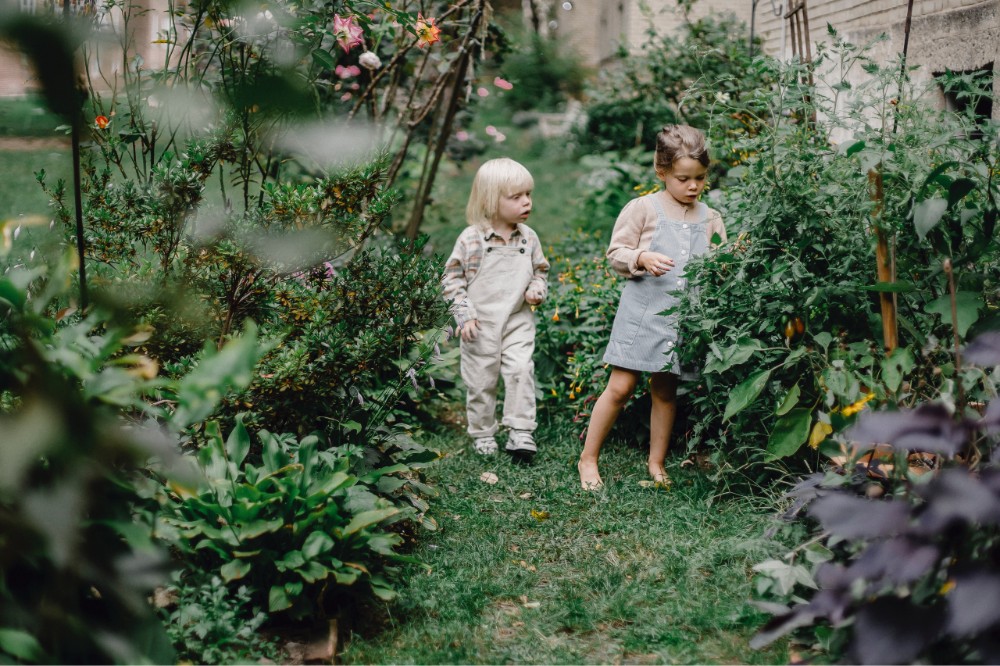
The threat of greenwashing
With increased consumer demand for sustainability claims comes the risk of greenwashing. Brands, unknowingly or otherwise, fall into the trap of labelling their products as sustainable without the data to back it up. As a result, terms such as “green” or “environmentally friendly” are no longer permitted without credible data to substantiate them. This data can come in the form of supply chain information, material composition and the manufacturing process gathered from supply chain traceability technologies.
The potential damage to a brand if they are accused of greenwashing by the increasingly sceptical consumer can be astronomical. And childrenswear is not immune from this. Brands in this sector must also be ready to provide the data in order to hold their place as a reliable name in the sustainable market.
A circular solution?
Kids grow up fast. Toys are grown out of and so too are clothes. The circular model is currently taking the fashion industry by storm, with the rental industry becoming increasingly popular in menswear and womenswear. The short shelf-life of childrenswear means that it is also the ideal circular environment. The rental business is not a luxury trend. In Scandinavia, children’s institutions like daycare and kindergartens have arranged deals with clothing brands to have overalls in house, allowing the institutions to provide the size range needed to cater for all the children as they grow.
In collaboration with Bergans of Norway, Trimco Group has created an app for a circular subscription service for children’s winter overalls. With this app, the garments can be returned when a new size is needed and the returned garment is processed for another child, reducing the number of new products bought and therefore reducing unnecessary waste.
Beyond rental, the repair and reuse solution in the circular model also holds a lot of potential within the childrenswear market
We encourage kids to be active, to be small explorers as they begin to understand the world around them. With this comes potential damage to clothes, whether it’s a hole in the knee in a pair of trousers or a broken zipper. For incidences such as these, the agreements between children’s institutions and childrenswear brands like Bergans of Norway not only provide overalls in-house but also offer repair services.
There has also been a change in attitude in recent years where buying new is no longer the rule. Recycled and repurposed clothes are increasingly worn more as a badge of honour rather than something to hide. Parent Swap Shops have popped up all over the UK in which parents can list their children’s old or unused school uniform for the use of others. There is clearly a shift in attitude among consumers, but is the industry itself ready to make this step towards a circular solution?
For many brands, such a disruption to traditional manufacturing and commerce is a daunting and unfeasible task. However, with traceability technologies, brands can navigate these solutions and implement a more socially and environmentally conscious business model that champions transparency and benefits the future of the brand and the planet.
The path forward
Traceability solutions allow brands to map their supply chain and share validated sustainability claims with consumers using communication tools such as QR codes or NFC technology. Product DNA is going even further; tracing the product along its entire life cycle, with circular business model solutions such as product-as-service. It has the chance to empower brands, and in particular childrenswear brands, where the potential for successful change is so substantial.
With a need to purchase clothes regularly because of rapid size changes, childrenswear and schoolwear brands can play their part in reducing clothing waste and encouraging mindful purchase decisions when they have direct access to information about the garment, brand, and end-of-use options, all of which can be gained through embracing traceability technologies.
For further information on Trimco, please click here.








